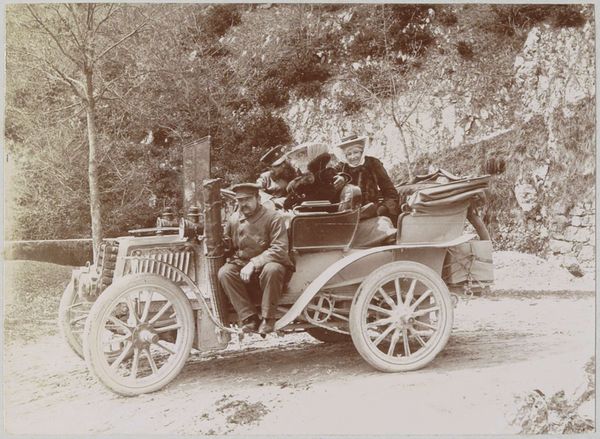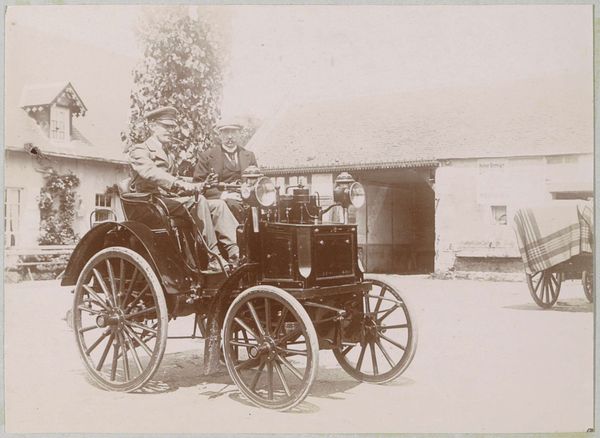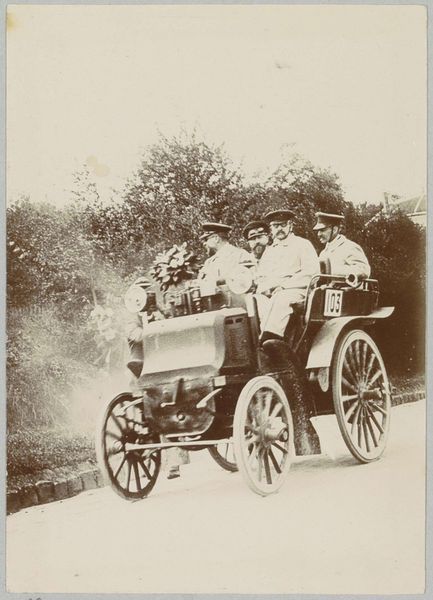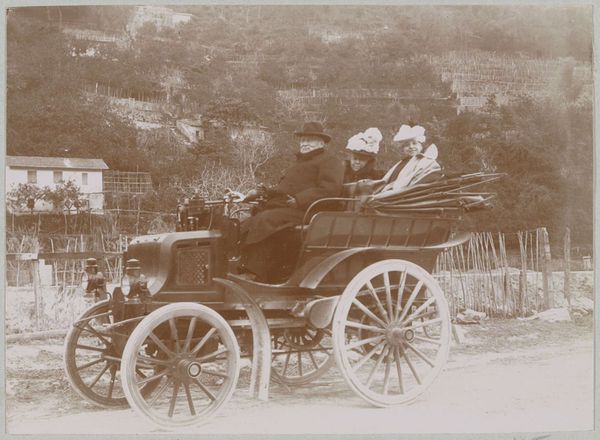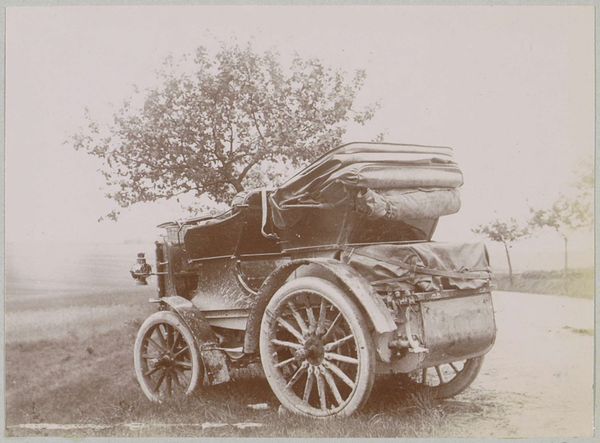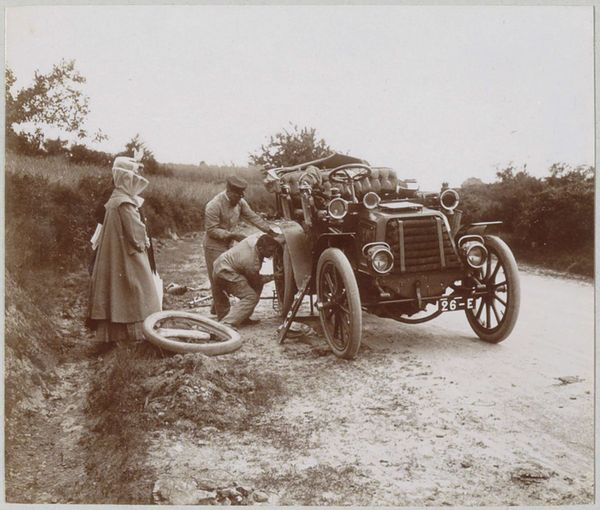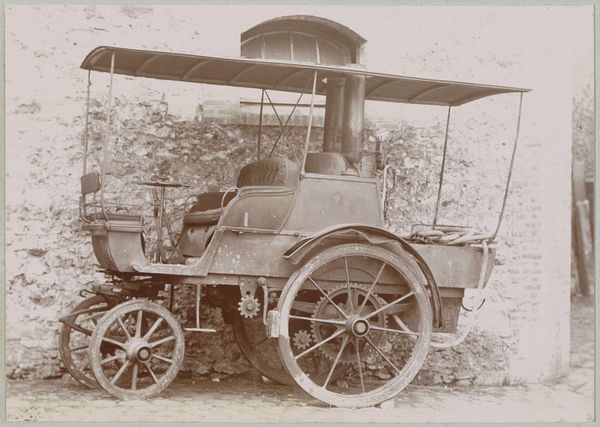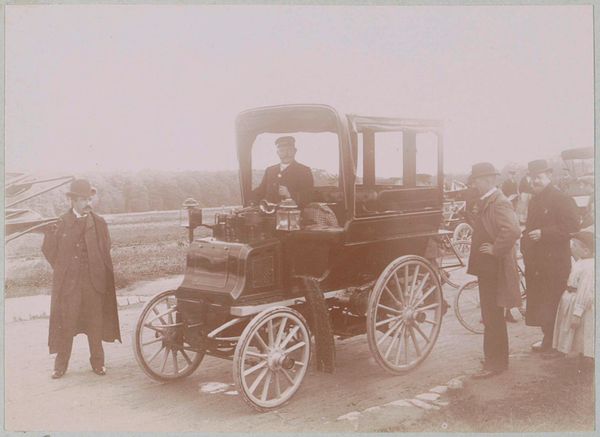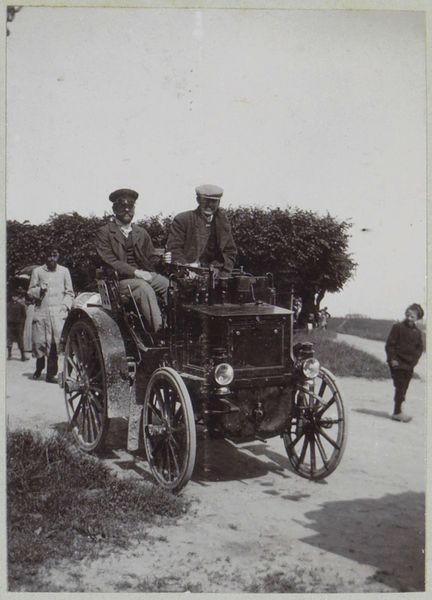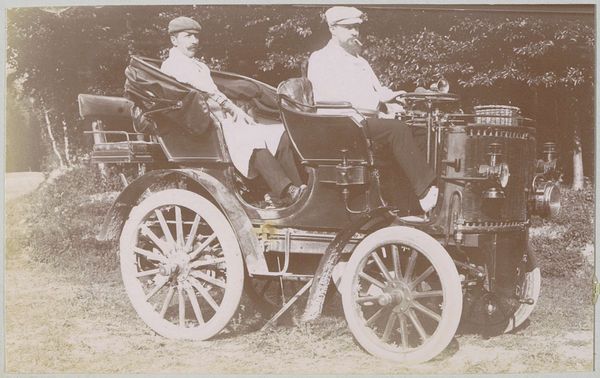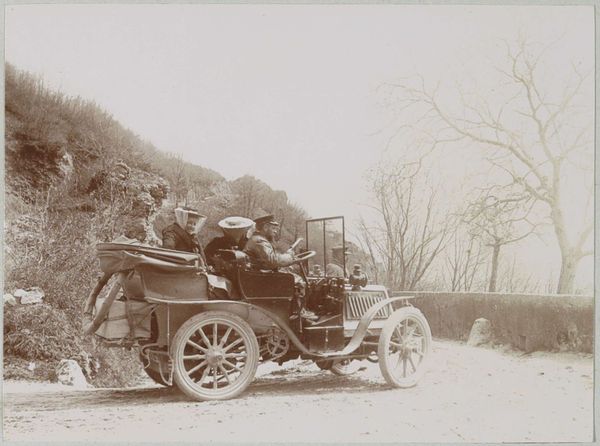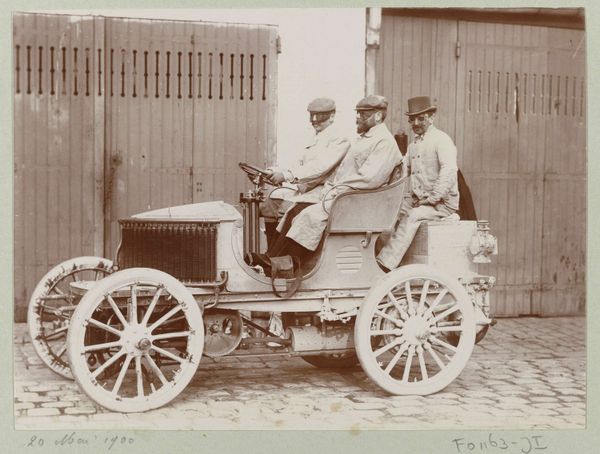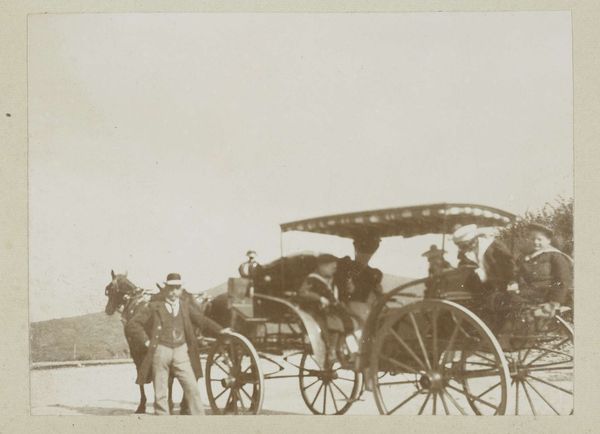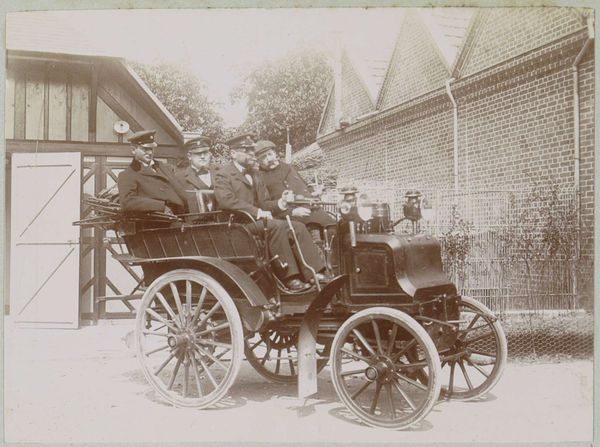
photography
#
portrait
#
photography
#
cityscape
Dimensions: height 76 mm, width 106 mm
Copyright: Rijks Museum: Open Domain
Curator: The sepia tones lend a real warmth to this photographic portrait from around 1900, titled “Twee mannen in een automobiel in Bar-le-Duc”. Editor: It's striking how much detail is captured in the men’s clothing; I almost feel the tweed of their jackets. And yet there’s also a kind of stillness about the composition. Curator: That stillness is interesting, particularly when thinking about the means of production. These early automobiles represented industrial advancement, wealth, and the very possibility of speed in a society still accustomed to horse-drawn carriages. Do you think the photographer, Delizy, was trying to mediate a tension between these new technologies and older traditions? Editor: I would suggest it could be a tension or perhaps it's capturing a pivotal moment. The contrast of light and shadow focuses the gaze directly onto the subjects; their postures tell of status. How aware were they, do you think, of presenting a new form of modern life to the world through photography, as opposed to simply documenting it? Curator: They are certainly performing modernity for the camera, but perhaps unaware that their performance would contribute to solidifying the automobile as an exclusive commodity rather than simply a new form of transport for the masses. It makes you consider how Delizy’s work participates in constructing these early images of progress. Editor: Right. And the composition itself emphasizes certain class markers; you have a somewhat rigid structure – vertical lines meeting circular forms, and the monochromatic quality directs us towards the nuances of expression on the men's faces and their social positions. I am more inclined to view the presentation of progress in its composition rather than the process of manufacture and marketing. Curator: Yet even in that controlled composition, the surrounding landscape, with the textures and randomness, plays an equally vital role by grounding the entire construction of the new in a social world in need of workers to operate machinery and purchase those newly available goods. It suggests that images of progress always have a background in real working life and labour. Editor: Well, our conversation definitely highlights the complexities embedded in capturing an era undergoing rapid transformation! Curator: Indeed; the photographic process and the end result each offer unique perspectives into an age of transition.
Comments
No comments
Be the first to comment and join the conversation on the ultimate creative platform.
